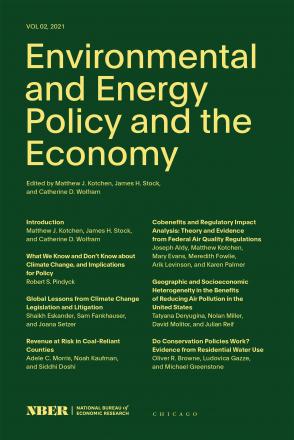Cobenefits and Regulatory Impact Analysis: Theory and Evidence from Federal Air Quality Regulations

You may be able to download this chapter for free via the Document Object Identifier.
This paper considers the treatment of cobenefits in benefit-cost analysis of federal air quality regulations. Using a comprehensive data set on all major Clean Air Act rules issued by the Environmental Protection Agency over the period 1997-2019, we show that (1) cobenefits make up a significant share of the monetized benefits; (2) among the categories of cobenefits, those associated with reductions in fine particulate matter are the most significant; and (3) cobenefits have been pivotal to the quantified net benefit calculation in nearly half of cases. Motivated by these trends, we develop a simple conceptual framework that illustrates a critical point: cobenefits are simply a semantic category of benefits that should be included in benefit-cost analyses. We also address common concerns about whether the inclusion of cobenefits is problematic because of alternative regulatory approaches that may be more cost-effective and the possibility for double counting.


